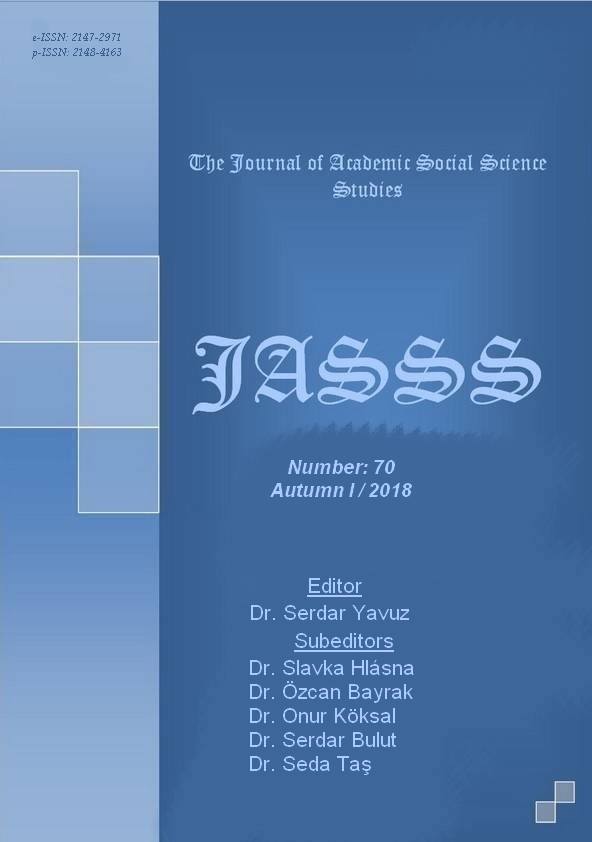Author :
Abstract
Mimarlık bir sanattır. Tarih biliminde olduğu gibi kökleri tarih öncesi zaman dilimine gider. Mimarlık tarihi, eski kültürlerin ve medeniyetlerin yapı kalıntılarını inceleyen bilimdir. Eski kültürlerin savunma yapıları, yerleşmeleri farklı insan gruplarının saldırılarından korumak ve gözlerden saklamak için, taş, ahşap, sıkıştırılmış toprak, kerpiç gibi malzemeler kullanılarak inşa edilmiş yapılardır. Savunma duvarı ise, savunma güçlerini saldırganların silahlarından korurken, aynı zamanda onları gizleyerek yapacakları manevralar için bir perde görevini de yerine getirir. İnsanoğlunun savunma yapılarıyla ilk konumu, Paleolitik Çağ’da mağaralar olurken, yerleşik yaşama geçişiyle birlikte Anadolu’da Çatalhöyük’te görülmektedir. ETÇ’de kent devleti kavramının yerleşimiyle birlikte tahkimat sistemleri gelişmeye başlamıştır. Sur duvarları (hisarlar), devasa kapılar, mancınıklar, koçbaşları gibi savunma yapılarına ek olarak kuleler de büyük önem arz etmektedir. Yerleşim yerinin özelliğine göre önce kaleler, sonra kuleler ve en yakın konuma duvarlar yapılarak kentler koruma altına alınıyordu. Hangi dönemde olursa olsun şehir kapılarını, kuleleri, sur bedenlerini kısacası şehrin tahkimat yapılarını yaptıranlar, savunma sistemlerini estetik bir kalitede inşa ettirmişlerdir. Savunma sistemi, yalnızca savaş alanında değil aynı zamanda barış ve huzur ortamında da ortaya çıkan anlaşmazlıkların çözümünde caydırıcı rol oynamıştır. Kuleler önceleri savunma amaçlı mimari yapılarken daha sonra saldırı amaçlı da kullanıldığını görmekteyiz. Öyle ki bu yapılar hem savunmada hem de savunmayı delmede önemli bir pozisyonda olduklarından bir uygarlığı yıkıp bir uygarlığın doğuşuna katkı sağlamışlardır.
Keywords
Abstract
Architecture is an art. Just as in the science of history, their roots go back to prehistoric time. The history of architecture is a science that examines the remains of old cultures and civilizations. Defense structures are constructions built using materials such as stone, wood, compressed earth, mudbrick to protect settlements from attacks by different groups of people and to hide them from the eyes. The defense wall also acts as a screen for the maneuvers they will carry out while shielding the defense forces from the weapons of the attackers, while at the same time hiding them. The first position of mankind with its defensive structures is seen in Çatalhöyük in Anatolia with its transition to a settled life while the cave is in the Paleolithic age. With the settlement of the concept of the city state in the Early Bronze Age, the systems of fortification started to develop. Towers are of great importance in addition to defensive structures such as the rampart of city (fortress), huge gates, catapults and ramparts. According to the characteristics of the settlement, the cities were protected by making the buildings first, then the towers and the closest walls. In any period, the city's doors, the towers, the walls, in short, the fortifications of the city, have made the defensive systems aesthetically pleasing. The defense system has played a role of a deterrent not only in the battlefield but also in the resolution of conflicts that have arisen in peace and tranquility. We can see that the towers were initially constructed for defensive purposes and then used for attack purposes. Such structures have contributed to the birth of a civilization by destroying a civilization since they are in an important position both in defense and in deliberation of defense.





